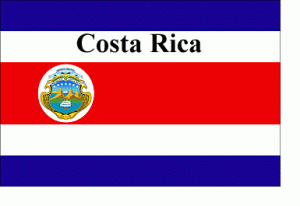 The oldest democracy in Central America, Costa Rica boasts one of the highest literacy rates in the region (around 92%). Education through secondary school is universal, free and compulsory.
The oldest democracy in Central America, Costa Rica boasts one of the highest literacy rates in the region (around 92%). Education through secondary school is universal, free and compulsory.
Preschool education for 5 and 6 year-olds is obligatory, and is provided by a combination of public and private institutions. Its objectives include the socialization of young children to prepare them for more formal learning, to promote creative expression, and to develop motor skills. Two levels of primary school, for students in grades 1-4 and grades 5 and 6, foster language, communication, math, and critical thinking skills.
The goal of secondary education is to provide students with fundamental competencies which will prepare them for university or professional studies or the workforce. Students may choose from a variety of educational paths, from wholly academic, to artistic, to combinations of academics and technical subjects. As in other Central American countries, including Nicaragua, upon completion of secondary school students are awarded a Diploma of Completion of Basic Cycle Studies, known as a Bachillerato de Educacion Media.
Secondary school students are graded as follows:
|
Scale |
Grade Description |
U.S. Grade Equiv. |
|---|---|---|
|
90-100 |
Sobresaliente (Outstanding) |
4.00/A |
|
80-89 |
Notable (Very Good) |
3.00/B |
|
70-79 |
Suficiente (Pass) |
2.00/C |
|
0-69 |
Insuficiente (Fail) |
0.00/F |
The following chart depicts the post-secondary grading scale:
|
Scale |
Grade Description |
U.S. Grade Equiv. |
|---|---|---|
|
95-100 |
Excellente |
4.00/A |
|
85-94 |
Muy Bueno (Very Good) |
3.00/B |
|
70-84 |
Bueno (Good) |
2.00/C |
|
0-69 |
Nota Minima |
0.00/F |
Primary school curriculum consists of Spanish, natural sciences (including agriculture), mathematics, and social studies. Students are also offered twice-weekly classes in music, physical and religious education, art, and English or French.
Secondary schools offer courses in Spanish, English, French, social studies, social sciences, fine arts, civics, physics, chemistry, biology, and mathematics. Depending on whether students choose to pursue an academic, artistic, or technical track they will spend more time in classes relating to a particular area, such as literature, fine arts, science and technology, or vocational studies.
Four public universities, including the Universidad de Costa Rica, established in 1940, provide higher education to the country’s students. Costa Rica also is home to over 40 non-university private professional institutes which offer two to three-year diploma programs in disciplines including accounting, education, and business.